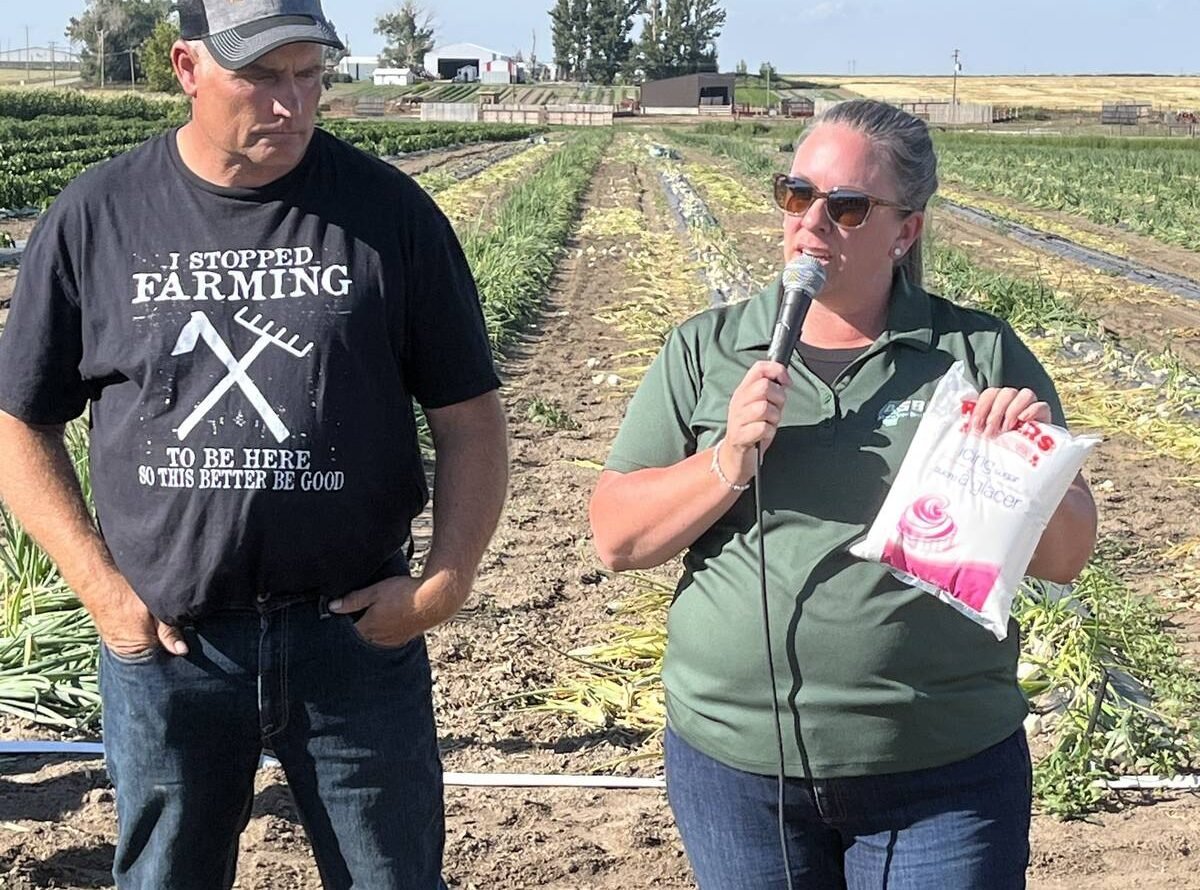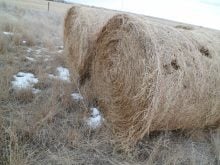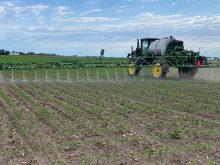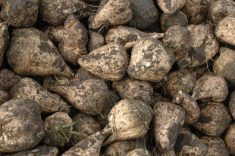The farm-to-table movement recently made its way to Molnar Farms in Barnwell, Alta., showcasing the operation during a summer tour.
The various vegetables that James Molnar grows on the farm were the centre of attention as he and Alberta Sugar Beet Growers executive director Jennifer Crowson talked about the sugar beet crop and the organization.
Given that Taber is the sole sugar beet processor left in Canada, most of the crop is grown within a close radius of the agricultural town.
Read Also

Volatile temperatures expected for this winter
DTN is forecasting a lot of temperature variability in the Canadian Prairies this winter. Precipitation should be close to average.
“We are a marketing board. What that means is we manage quota for the growers,” said Crowson.
She said that besides the sugar content, beets can also benefit livestock.
“We do have some folks around the province that will grow beets for fodder, which means for feed for their cattle. Because we’re a marketing board, we do have regulations, so they do need to go through us when they are growing those beets.”
Sugar beets in southern Alberta are grown in a one-in-four rotation to avoid disease pressure.
“I grow corn, pumpkins, alfalfa, zucchini, durum and barley,” said Molnar.
“Generally, we try to follow sugar beets with a cereal, either durum or barley or spring wheat. Then, after that cereal, we’ll go into pumpkins. After the pumpkins, we’ll go into corn, and then generally back to barley because corn is a real big carrier of fusarium. We try to follow with barley because barley is the least susceptible to fusarium. And then we can go back to sugar beets again. It doesn’t always work out that way, but that’s kind of how we try to keep it.”
Because of the climate in Canada, the ASBG is not able to source its seed within Canada, needing two seasons to grow.
Instead, the seed comes from the United States, with varieties specific to southern Alberta conditions.
“One will be orange and one will be blue, and that is the company that produces the seed. So primarily we’ve got Beta and Haloppe. Each grower kind of has their favourite. But, when we do the seed, it’s through a lottery system because we only have x number of seed of certain varieties. Everybody gets to put their name in a hat, essentially, to get that.”
Cruiser insecticide is applied to the sugar beet crop, primarily to fight against wireworms.
When the crop is harvested, it is sent to piling grounds in seven locations: Picture Butte, Coaldale, Tempest, Taber, Vauxhall, Enchant, and Bow Island/Burdett.
The beets are planted early in the spring with the last crop going out in October.
From October to early February, the beets are hauled into Rogers Sugar’s processing factory in Taber. They go into a flume, where they are washed, shredded and boiled, producing a thin juice and beet pulp. The beet pulp is dried and turned into animal feed.
“They have to feed it to their animals within a day or two days, otherwise it starts to mould,” said Crowson.
“When we spin out this juice, we get a molasses. This molasses is used in animal feed and some liquor production as well. But it’s not used in baking because it’s quite tart. When you see brown sugar, that’s not coming from Taber.”
White or granulated sugar in a Rogers Sugar bag with the number 22 as the start of the facility code comes from Taber.
“We as a grower organization promote the crap out of that being grown and processed locally because we want to buy local,” said Crowson, adding eight per cent of the nation’s sugar comes from Taber, the rest being cane sugar.
Every five pounds of sugar beets produce about one pound of sugar.
An ideal storage year is for temperatures to stay cold enough from October to February so that it will result in higher sugar content.
An average yield in a normal year is approximately 33 adjusted tonnes per acre.
A couple of years ago, prime conditions included a hot spring, ample moisture, a hot end to the summer with cool nights with the sugar being pushed from the leaves back into the plant. That year, the high yield was 45 adjusted tonnes per acre.
It’s hoped growers will hit 30 tonnes this year, but ASBG was hit with a tough extended negotiating timeline with Rogers Sugar and producers ended up three weeks behind schedule.
“Our contract wasn’t agreed to in principle until May 8 and seed didn’t go into the ground until May 14. Typically, we are seeding in the last week of April.”
Growers planted beets on 22,500 acres this year compared to recent history of 28,000 acres. They could likely triple that output and still mange rotational requirements, possibly leading to fewer grain crops.
Yields are much higher now than they once were.
“Twenty years ago, we grew about 19 to 20 tonne to the acre. Now we are growing 30, 35, 40 tonne. It’s not that they (Rogers Sugar) have decreased their capacity to process; we’ve increased what we’ve grown per acre,” said Gwen Young, ASBG director for Bow Island/Burdett.















